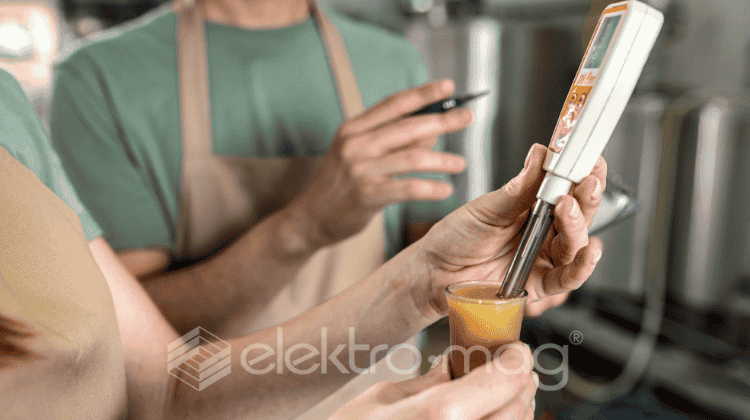
What is a Viscometer?
A viscometer is an essential tool in laboratories and various industries, used to measure the viscosity or flow resistance of fluids. Viscosity is a critical property in fluid dynamics, influencing applications from oil lubrication to food processing. Understanding the nuances of viscosity measurement helps ensure product quality, optimize processes, and reduce equipment wear. This post explores viscometer types, their applications, and critical factors for precise measurements.
Types of Viscometers
- Capillary Viscometers: These use gravity flow to measure fluid resistance. The U-tube design (like the Ostwald and Ubbelohde viscometers) is common for low to medium viscosity fluids. Capillary viscometers are highly accurate for Newtonian fluids, providing kinematic viscosity measurements.
- Rotational Viscometers: Commonly used in industrial settings, rotational viscometers (like the Brookfield viscometer) measure absolute viscosity by rotating a spindle within the fluid. They’re suited for Newtonian and non-Newtonian fluids, offering consistent results in high-shear applications.
- Falling Sphere Viscometers: These measure the time it takes for a sphere to descend through the fluid, which helps determine viscosity using Stokes’ law. These are ideal for high-viscosity samples and can be adapted with electronic sensors for opaque liquids.
- Vibrational Viscometers: Vibrational models use oscillating rods to assess viscosity. Suitable for industrial environments, they can measure high-viscosity fluids, including those with particles or fibers, with minimal maintenance.
Applications of Viscometers
Viscometers play crucial roles across diverse industries:
- Lubricant Quality Control: Ensures optimal lubrication in machinery by monitoring oil viscosity.
- Pharmaceuticals: Helps in ensuring drug consistency and efficacy through precise liquid measurements.
- Food & Beverage: Viscosity impacts product texture and shelf life, making viscometers essential in production.
- Petrochemicals: Used to assess crude oil and refined product viscosities for storage and transportation.
Factors Affecting Viscosity Measurements
Achieving accurate viscosity readings requires careful attention to several factors:
- Temperature Control: Viscosity changes with temperature, so maintaining a stable temperature during testing is essential. Advanced viscometers incorporate thermoelectric control for precise temperature regulation.
- Calibration and Maintenance: Routine calibration ensures consistent readings. Some models require recalibration annually, while industrial units may need built-in cleaning systems due to high sample throughput.
- Shear Rate and Sample Handling: Shear rate adjustments are crucial for non-Newtonian fluids, as viscosity may change under different flow conditions. Proper sample handling and rinsing between tests prevent contamination and ensure repeatability.
- Instrument Selection: Choose viscometers that align with your sample properties (Newtonian or non-Newtonian) and industry requirements to optimize performance and reliability.
Emerging Trends in Viscometry
Emerging trends in viscometry are reshaping how industries measure and monitor fluid viscosity, with technological innovations driving significant advancements in both accuracy and functionality. The integration of artificial intelligence and machine learning algorithms represents one of the most transformative developments in modern viscometry, enabling predictive maintenance schedules and automated calibration procedures that substantially reduce downtime and human error.
Miniaturization continues to be a prominent trend in viscometer design, with manufacturers developing increasingly compact and portable devices without sacrificing measurement precision. These portable instruments incorporate advanced sensor technologies and robust digital interfaces, allowing for reliable field measurements that were previously only possible in laboratory settings. The reduction in instrument size has also led to decreased sample volume requirements, making the testing process more efficient and cost-effective.
Cloud connectivity and Internet of Things (IoT) integration are revolutionizing how viscometry data is collected, analyzed, and shared across organizations. Modern viscometers now feature wireless connectivity capabilities that enable real-time data transmission to centralized databases, facilitating immediate access to measurement results from anywhere in the world. This connectivity has proven particularly valuable for organizations with multiple production facilities, enabling standardized quality control processes across different locations.
The Role of Viscometers in Modern Industry
Viscometers are indispensable for industries that rely on precise fluid measurements. As technology advances, the capability of viscometers to provide accurate, reliable viscosity data is improving, paving the way for innovations in quality control and process optimization. Selecting the right viscometer and understanding measurement parameters are key to leveraging the full benefits of viscosity analysis.
From the pharmaceutical industry, where viscosity impacts drug formulation and delivery, to the food industry, where it influences texture and mouthfeel, viscometers are used across a wide range of applications. By understanding the viscosity of fluids, manufacturers can optimize production processes, improve product quality, and develop new materials with tailored properties. As technology advances, viscometers are becoming increasingly sophisticated, offering greater accuracy, precision, and versatility. By leveraging the power of viscosity measurement, industries can stay ahead of the curve and deliver innovative products to the market.






